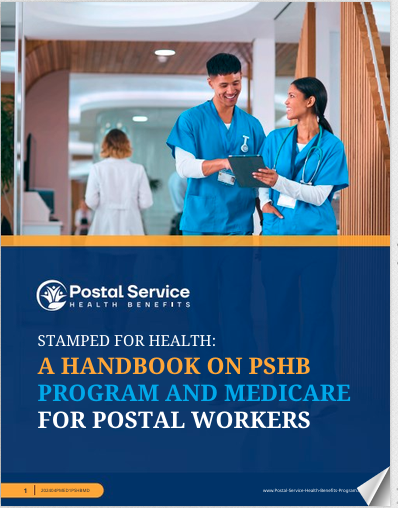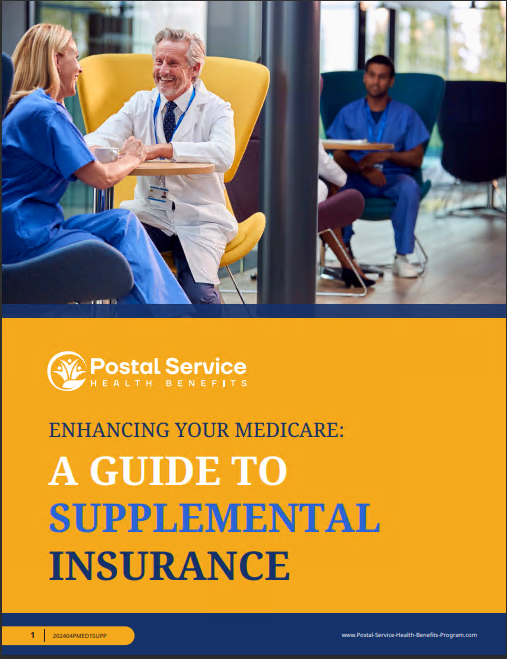Key Takeaways
-
Your personal cost share for PSHB in 2025 may have increased even if you didn’t actively change plans—this is due to automatic enrollments and rising premium trends.
-
Understanding how government contributions are calculated and how deductibles, copayments, and coinsurance apply to your usage can help you avoid financial surprises.
The Quiet Increase: What Changed in 2025
In 2025, many Postal Service employees and retirees are paying more for their health plans under the new Postal Service Health Benefits (PSHB) program—sometimes without even realizing it. Even if you didn’t make any changes during Open Season, your contributions may have increased.
Why? Because most PSHB enrollees were auto-enrolled into corresponding plans as part of the transition from FEHB. These equivalent plans often came with:
-
New cost structures
-
Higher employee premium shares
-
Adjusted deductibles or coinsurance rules
If you haven’t compared your 2025 deductions with what you paid in 2024, now’s the time.
Government Contributions: A Familiar Formula With New Impact
The federal government continues to pay approximately 70% of the total PSHB premium, just as it did under FEHB. However, the total cost of plans in 2025 is higher due to a nationwide increase in health plan expenses.
That means even with the government still paying a similar percentage:
-
Your 30% share now applies to a larger total premium
-
You might be contributing more monthly—even if your plan remained the same
Your monthly share depends on your enrollment type:
-
Self Only
-
Self Plus One
-
Self and Family
The larger your coverage group, the more significant the monthly increase may feel. This effect is especially noticeable for retirees and those not coordinating with Medicare.
Premium Deductions: Monthly vs. Biweekly Confusion
One subtle source of confusion in 2025 is the way your costs are presented. Some communications show biweekly deductions, while others reference monthly totals. It’s easy to underestimate what you’re actually paying over the year if you’re only tracking biweekly figures.
For example:
-
A biweekly increase of just $15 adds up to nearly $390 annually
-
Multiply that by multiple enrollees or plans, and the numbers climb quickly
Make sure to calculate your true annual cost based on your pay frequency to get a realistic sense of your financial commitment.
Medicare Coordination: A Make-or-Break Factor for Retirees
For Medicare-eligible annuitants, 2025 is the first year that coordination with Medicare Part B is no longer optional in many cases. If you’re required to enroll in Part B and you haven’t, you could face:
-
Loss of prescription drug coverage under PSHB
-
Higher out-of-pocket costs
-
Coverage disruptions
On the other hand, enrolling in Medicare Part B often leads to waived or reduced deductibles and copayments in your PSHB plan.
Although you’re paying a separate premium for Part B, the combined effect may result in savings—if your PSHB plan integrates benefits favorably.
Cost-Sharing in 2025: It’s Not Just the Premiums
Premiums aren’t the only thing changing in 2025. Your total healthcare cost includes other layers:
-
Deductibles – In-network amounts typically range from $350 to $2,000 depending on the plan
-
Coinsurance – Often between 10% to 30% for in-network care, and higher out-of-network
-
Copayments – Common amounts range from $20 to $150 depending on the service type
If you’ve had more medical visits, tests, or prescriptions in 2025, the impact of these cost-sharing features could outweigh the premium increase itself.
Impact on Retirees vs. Active Employees
Retirees
Retirees generally pay their full premium share directly, often through annuity deductions. In 2025, their costs increased:
-
Due to higher plan premiums
-
Because they no longer benefit from payroll tax offsets or employer contributions beyond the standard government share
-
And because Medicare coordination is now more tightly enforced
Active Employees
Active Postal Service employees saw their employee share rise as well. Their paycheck deductions in 2025 reflect the increased total plan costs, even if the government’s percentage contribution stayed stable.
Special Enrollment Rule: Who’s Exempt from Mandatory Medicare Enrollment?
Not all annuitants are required to enroll in Medicare Part B for PSHB:
-
If you retired on or before January 1, 2025
-
If you were age 64 or older as of January 1, 2025
-
If you live permanently overseas
-
If you have VA or Indian Health Services coverage
However, if you fall outside these groups, you must be enrolled in Part B to retain full PSHB benefits. Not enrolling could significantly raise your out-of-pocket expenses.
The Long-Term Trend: Why Your Costs May Continue Rising
Health plan cost increases aren’t unique to 2025—they reflect an ongoing trend:
-
Inflation in healthcare services
-
Higher pharmaceutical costs
-
Expanded benefits (like mental health or telehealth) that add value but raise premiums
While the government continues to cover roughly 70% of the total plan cost, any future premium increases will continue to raise your share unless offsets or adjustments are made.
Staying Ahead: What You Can Do Now
To manage your 2025 health costs wisely, consider the following:
-
Review your pay stub or annuity statement to check your current PSHB deduction
-
Log into LiteBlue or KeepingPosted.org to view your plan’s 2025 brochure
-
Check for changes in coinsurance or deductible amounts
-
Evaluate your Medicare enrollment status, especially if you recently turned 65 or will soon
-
Track your healthcare usage to estimate year-end expenses
-
Revisit plan options during the next Open Season (November to December)
Even small plan differences—like whether lab tests are subject to coinsurance or copay—can lead to hundreds of dollars in savings or extra costs annually.
Use This Year as a Benchmark
2025 is the first full year under the PSHB program. That makes it a valuable reference point for:
-
Tracking how your total costs evolve over time
-
Evaluating whether your plan’s benefits truly match your healthcare needs
-
Planning future health expenses more accurately
You’ll want to compare this year’s totals against upcoming years, especially as inflation and policy adjustments continue to impact coverage.
Let the Numbers Speak: 2025 Contribution Summary Table
| Enrollment Type | Est. Biweekly Premium (Your Share) | Approx. Monthly Total | Approx. Annual Cost |
|---|---|---|---|
| Self Only | $111.26 | $241.07 | $2,892.84 |
| Self Plus One | $240.49 | $521.06 | $6,252.72 |
| Self and Family | $261.70 | $567.02 | $6,804.24 |
These figures represent average employee/annuitant shares based on plan cost structures. Your exact amount may vary.
What This All Means for You in 2025
Whether you’re an active Postal Service employee or a retiree, 2025 brings real shifts in how much you contribute to your health coverage—some visible, others less so. Being proactive about understanding your plan, enrollment requirements, and benefit integration is more than just smart—it’s financially necessary.
If you’re unsure about your current plan or want to explore whether your costs can be reduced, consider getting in touch with a licensed agent listed on this website. They can help you evaluate your current contributions, benefits, and any Medicare coordination needs that may apply to your situation.






